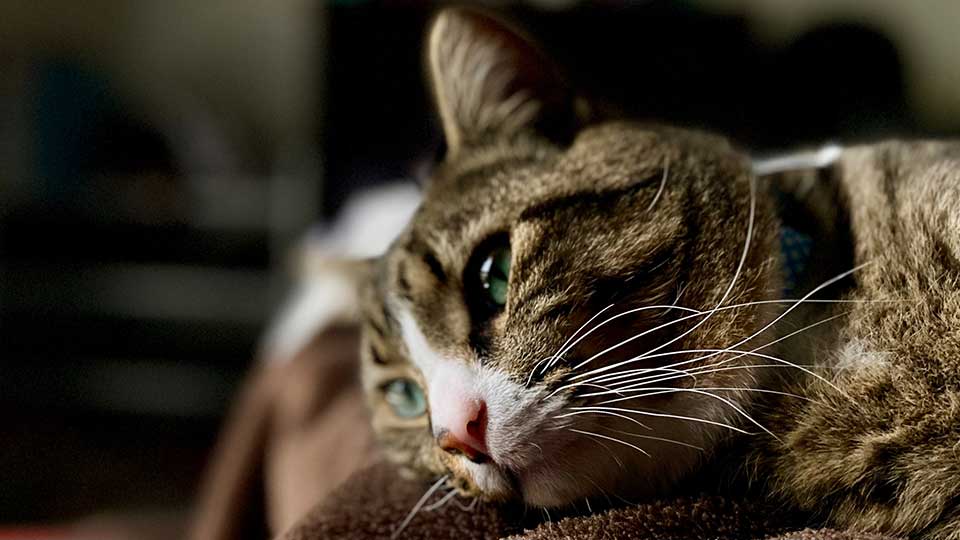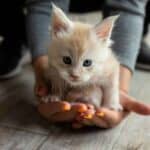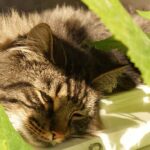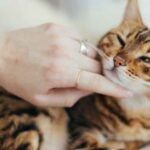My Maine Coon, Bella, was always energetic and playful.
She would greet me at the door when I came home, curl up on my lap when I watched TV at night, and chase after her toys when I threw them.
But one day, I noticed that Bella was not her usual self. She seemed sad and listless.
She stopped grooming herself. Her fur became matted and dirty. And she stopped playing with her toys and hid under the bed most of the time.
I worried about Bella. That’s when I began my journey into understanding cat depression.
Can Cats Be Depressed?
So I decided to take Bella to the veterinarian for a check-up.
The veterinarian examined Luna and ran some tests. He told me that Bella was physically healthy but suffering from depression.
Depression? That was the first time I knew that cats also have depression.
Then he asked me if there had been any changes in Bella’s environment or routine recently. I said yes, because I had moved to a new apartment with Bella a few weeks ago.
The new apartment was smaller and darker than the old one. It had no balcony like before, where Bella could see the outside world. It also had no other cats or humans for Bella to interact with.
Contrary to popular belief, cats indeed can experience depression.
While their emotional spectrum may not be as complex as ours, cats can certainly feel a range of emotions, including depression.
Veterinarians and animal behaviorists recognize changes in a cat’s behavior, appetite, and energy levels as potential indicators of depression.
How to Tell If My Cat Is Depressed

Recognizing signs of depression in a cat can be tricky, especially with breeds like Maine Coons that are naturally independent and aloof.
However, I’ve come to learn a few telltale signs.
- Change in Appetite: One of the first changes I noticed was a significant decrease in my Maine Coon’s appetite. While occasional picky eating can be normal, consistent eating refusal can indicate depression or other health issues.
- Excessive Sleep: Cats are known for their love of sleep, but when my Maine Coon began sleeping much more than usual and showing less interest in playtime, I grew concerned. This lethargy and loss of interest can be a sign of depression.
- Over-grooming or Under-grooming: Cats are fastidious groomers. If you notice your Maine Coon obsessively grooming to the point of causing bald spots, it is a red flag. Conversely, neglecting grooming leads to a dull, matted coat can also indicate depression.
- Withdrawal: Maine Coons are usually sociable creatures. So, when my cat began to withdraw and seemed less interested in human interaction, it was a sign something was off.
- Changes in Vocalization: Maine Coons are a chatty breed. If your usually vocal cat has suddenly gone silent or, conversely, if your cat has become excessively vocal, it could be a sign of depression.
- Litter Box Issues: Lastly, changes in litter box habits can also indicate depression. This can include avoiding the litter box or having accidents outside it.
Common Causes of Cat Depression
Understanding the potential causes of cat depression can be crucial in addressing it.
Some common causes include:
- Changes in Environment: Cats are creatures of habit and changes in the home environment like moving houses, rearranging furniture, or even getting new household appliances can cause stress leading to depression.
- Loss or Addition of Family Members: Cats can form strong bonds with their human family members and other pets. The loss of a loved one can lead to depression, and similarly, the addition of a new family member or pet can cause stress.
- Boredom: Yes, cats can get bored too. Lack of stimulation, especially in indoor cats, can lead to depression.
Do Indoor Cats Get Depressed
The short answer is, yes.
Indoor cats can get depressed, particularly if their environment lacks stimulation.
While keeping cats indoors can protect them from many dangers, it can also lead to boredom and depression if not properly managed.
This is particularly true for active breeds like Maine Coons.
How to Help My Depressed Cat?
Helping a depressed cat can feel daunting, but don’t lose hope.
Here are some strategies I’ve found effective.
- Increase Playtime: Taking time each day to engage your cat in play can go a long way in alleviating depression. Toys that mimic prey, like feather wands or laser pointers, can be particularly effective.
- Create a Stimulating Environment: Adding cat trees, window perches, or even bird feeders outside windows can provide much-needed stimulation. For my Maine Coon, I found that a multi-level cat tree or a calming bed was particularly helpful. You can also try CBD treat to see if it helps.
- Maintain Routine: Cats thrive on routine. Keeping feeding, play, and sleep times consistent can provide a sense of security and ease depression.
- Consider a Companion: If your cat is alone most of the time, consider getting another pet. Remember to introduce the new pet slowly to avoid causing additional stress.
- Seek Professional Help: If your cat’s depression persists or worsens, it may be time to seek help from a veterinarian or a certified animal behaviorist. It’s always better to be safe than sorry.
As for Bella, I felt guilty for putting her through such a drastic change. I realized that I had neglected her needs and feelings. I wondered how I could make it up to her.
Luckily, the veterinarian said the condition was mild. He suggested ways to enrich Bella’s environment and stimulate her senses and told me to spend more time with Bella and show her love and attention. I followed the veterinarian’s advice.
Gradually, I saw some improvement in Bella’s behavior and mood. I was relieved to know that she was feeling better.
Depression in cats is real, but with patience, love, and a little bit of know-how, it can be managed.
Remember, you know your feline friend best, so trust your instincts when you feel something isn’t right. Here’s to happy, healthy cats!







